Mongolian gerbils (Meriones unguiculatus) and Syrian hamsters (Mesocricetus auratus) are two of the most common small animals people choose as a first pet – but there are quite big differences between them with regards to how they live and what they love.
This quick comparison guide should help you understand these differences and give you an insight into their care if you do chose them as pets in the future
Mongolian Gerbils – Typical Lifespan: 2.5 years to 4 years
Syrian Hamsters – Typical Lifespan: 2 years
So, lets get down to the real details…
Shape & Size:
Gerbils stand tall and and quite slender – spending a lot of their time sitting on their strong back legs like mini kangaroos – their long fluffy tail helping them to balance – Syrian hamsters however could more be described as low and wide.
Syrian hamsters have very short legs and tend to walk along on four legs most of the time, only sitting upright to eat really. They don’t have a very noticeable tail as such and it is very short and of no real use for balance.
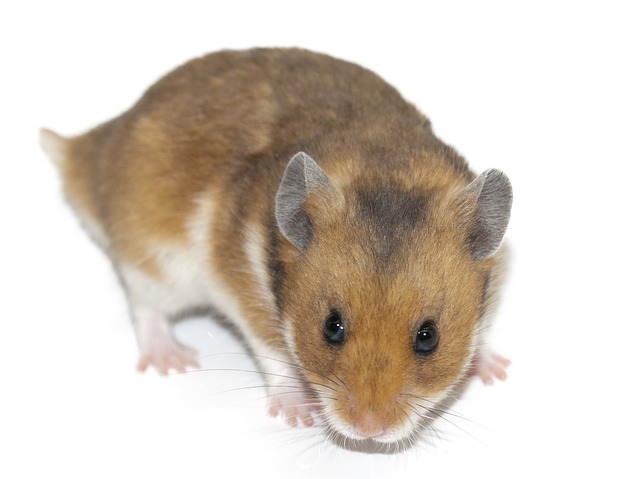
Both can fit in the palm of your hand and be carried around by young people very easily, gerbils being slightly lighter in weight (between 60g – 100g on average) whereas Syrian hamsters can tip the scale at a more portly 100g – 200g on average.
Syrian hamsters can come in a wider variety of colours than gerbils many of which are totally different – like you can’t get a tortoiseshell gerbil yet or a nutmeg Syrian hamster. Syrian hamsters also have larger choice or coat types and lengths with long-haired Syrians and satin coats very common in the fancy.
Gerbils can have a Rex or Wavy coat – but these are quite new to the Gerbil Fancy and so not so widespread – however, gerbils can be blue in colour – whereas this gene has yet to be found in hamsters.
Family & Friends:
Syrian hamsters don’t have friends.
No matter how long you take and how much care and attention you give then – you will almost 100% not find two healthy Syrian hamsters that will stay friends. They are solitary by nature and that is how they like it. Living alone is the best thing since sliced bread for them – so why would they change that? They can be really agressive to each other too – so it isn’t worth the risk.
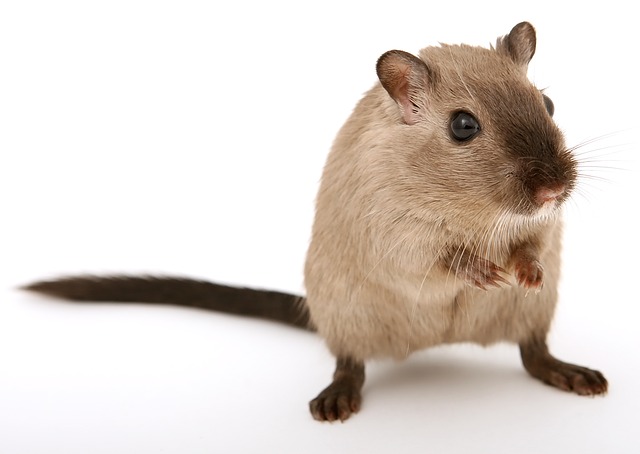
However, gerbils thrive on company. Mongolian gerbils are very sociable rodents and in nature would choose to live in extended family clans – as long as nobody rocked the boat. Unfortunately – this boat can be rocked slightly when in captivity and man-made clans can break up at any point – usually without too much warning (females in groups larger than 3 being the most easily rocked).
Don’t worry though – as gerbils just love making new friends!
Using the widely recommended split tank introduction procedure, you can easily introduce two single gerbils to each other over a short period of time and they will form a new and happy clan.
Gerbils don’t like strangers though – even previous friends and family who have been gone for a few hours are strangers again – so can’t be just put together – even in neutral territory. Gerbils friendships are based on scents – so it needs to be planned.
Character & Cuddles:
Gerbils are very inquisitive at all times of day – they aren’t generally nocturnal or creatures of habit like Syrian hamsters and so putting anything new into their tank at any time will no doubt wake them up and start a smell hunt or chewing session. Hamsters however, don’t often wake up for anything if the time isn’t right.
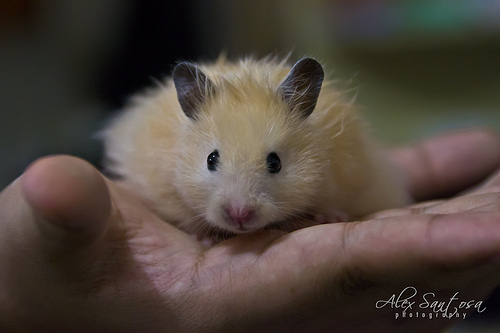

Syrian hamsters can be really friendly for cuddles when they are wide awake or have been given plenty of time to wake up – never put your hand near a sleeping Syrian hamster – you might not get it all back…
If left to their own devices, Syrian hamsters will only wake up during the night and you will never see them, but – they can be convinced to change their waking up time by gentle persuasion over time and so can be trained to wake up in the early evening while you are home rather than overnight when you are asleep…
Gerbils can often come looking for attention and cuddles at any time of day and often get in the habit of coming out to see you at any time of day – such as when you first get home – many responding to their names being called (or just any noise that is the same and associated with treats – but we don’t let ourselves believe it).
One gerbil is usually more adventurous than the others in each clan – but many gerbils will jump onto your offered hand to come out for a play or at least sit on your hand while eating treats.
Both gerbils and Syrian hamsters are easy to hand tame – and gerbils in particular can be taught to perform tricks using the clicker training method (PS: you don’t actually need a clicker).
Home & Housing:
This is where Mongolian gerbils and Syrian hamsters are totally different.
Due to their very different natural features and lifestyles, they both require very different things out of their homes and habitats. Gerbils really need to live in a simple one-piece glass tank (with or without a cage as a topper) and hamster can live in a wide variety of cages and tank with all sorts of tubes and sections.
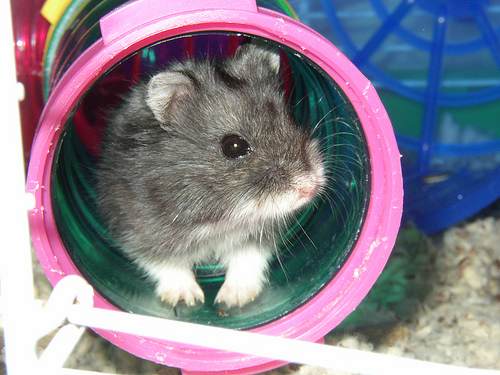

Gerbils love to tunnel, dig and chew – and as a result they need to be housed in a cage that is deep enough for a good few inches of substrate (usually wood-shavings, aspen or similar light-weight non-dusty dry substrate) for digging in as well as having space under that substrate for tunnels (man-made purchases) and tunnelling (they will dig their own).
They also need to be in a home that doesn’t have any weak points that they can chew through (bearing in mind they can chew through solid wood if they set their mind to it) or anything in or around their tank made of plastic.
Gerbils can chew through plastic vents, plastic stoppers and plastic tunnels in less than half an hour – and if that plastic is the only thing between your gerbil and the outside world – you are going to have a lost gerbil at any point…
Adding all this together – it is clear you that a gerbil can’t live in a hamster cage – it needs a solid-based steep-sided tank or tub.
Syrian hamsters however don’t really chew anything and can have the same plastic strawberry house their entire life – therefore there are a wide variety of cages that they can live quite happily in – and some look really fun!
They can still chew plastic if they want though, and can escape from badly connected tubes and cage compartments – but Syrian hamsters don’t often look to destroy and escape like gerbils inadvertently do.
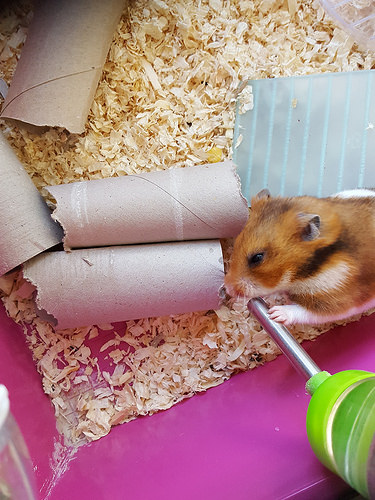

Syrian hamster cages only allow for a thin scattering of substrate with their shallow bases (usually sawdust or wood shavings) but this substrate is only needed to cover the plastic base from view and to absorb any voided waste – it isn’t part of their nature environment like gerbils.
If you gave a Syrian hamster 6 inches of bedding – it would just walk on the top of it – probably never exploring and setting up home in the potential world beneath…
Smell & Scent-Marking
Gerbils have a special gland in the middle of their tummies for scent-marking – so they don’t do it with liquids of solids like hamsters do – therefore gerbils are one of the least ‘smelly’ pets for keeping indoors.
Gerbils have no overall odor in their coats either, and glass doesn’t retain or enhance smells, so unless the bedding has been in the tank too long; the water bottle has leaked; or fresh food has spoiled, it won’t smell too bad. In fact most large gerbil tanks only need cleaning out once every month or so, as there is so much substrate in there absorbing the smell and any waste.
Basically, healthy gerbils won’t smell.
Syrian hamsters however, can have quite a strong-smelling cage due to the strength of their urine – especially in young hamsters and when frightened – and plastic can enhance it.
As a result of this, and their low substrate levels, they need their cages cleaned every week. Syrians hamsters don’t have a smell on their body though, but their low bodies and long coats can sometimes absorb some smell from the cage itself.
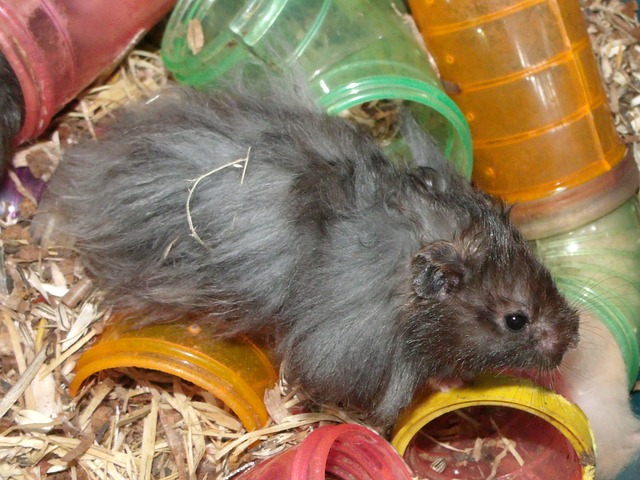
Foods & Feeding:
Both gerbils and Syrian hamsters eat roughly the same foods and have no special dietary requirements. They both do well on a commercially-made cereal-based food – either the muesli type (where you can see all the individual ingredients) or an extruded type (where all the ingredients are mashed together and you can’t see what the individual parts are).
Normal adult gerbils and Syrian hamsters require about the same levels of protein, fats and fibre (12%, 6-8% and 4-6%) which are found in most store-bought products – as well as a sprinkling of fresh fruit and vegetables a few times a week from a species-relevant fresh food safe list.
They also both like a small amount of live food/dried live food including mealworms and waxworms etc – both eating such things in nature as part of their everyday lives as well as fresh plants and wood to chew on (gerbils more so as they just love to chew things to pieces!).
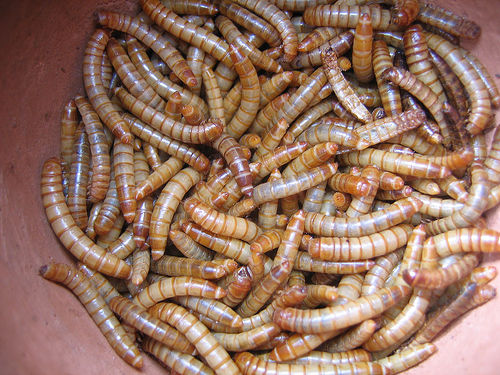

Healthy adult gerbils and Syrians do not need vitamin or mineral supplements in their water or as mineral stones, but there is no harm in offering them at all – you might regret it at 2am though when your gerbils start kicking it against the side of their tank!
Saying this though, sick, older, pregnant or lactating Syrian hamsters and gerbils could well benefit from these and other extra nutrients.
I found a quote in a 1964 book on Pet Keeping that said “hamsters eat wheat, sunflower seed, stale bread, biscuit, bread and milk, carrot, apple and a little green food like lettuce, dandelion and grass”. My, how times have changed.
Mind you saying that: we still haven’t extended their lifespan with all our modified diets; the book still said 2 years ‘normal lifespan’. Hmm?
Age & Illness:
Both gerbils and Syrian hamsters are short-lived compared to guinea pigs and degus – but this doesn’t mean that they can’t have substantial lives.
Gerbils are deemed adult at around 12 weeks of age and can often live to 4 years or over – with 3 years being very common these days. Gerbil can die at any age of course, but this is usually due to accidents and internal genetics rather than potential lifespan.
However, many a gerbil life is cut short from several common illnesses which usually strike from 2 years onward – and these include: Scent Gland Tumours – found mainly in males and restricted to the scent gland only (which can be surgically removed in any healthy gerbil – image below); Ovarian Cysts – found only in females only and cause her to swell out sideways (and which can be surgically drained in healthy younger females); and Strokes which can affect any gerbils at any age and can’t be treated or prevented by veterinary intervention – just palliative care during and afterwards.
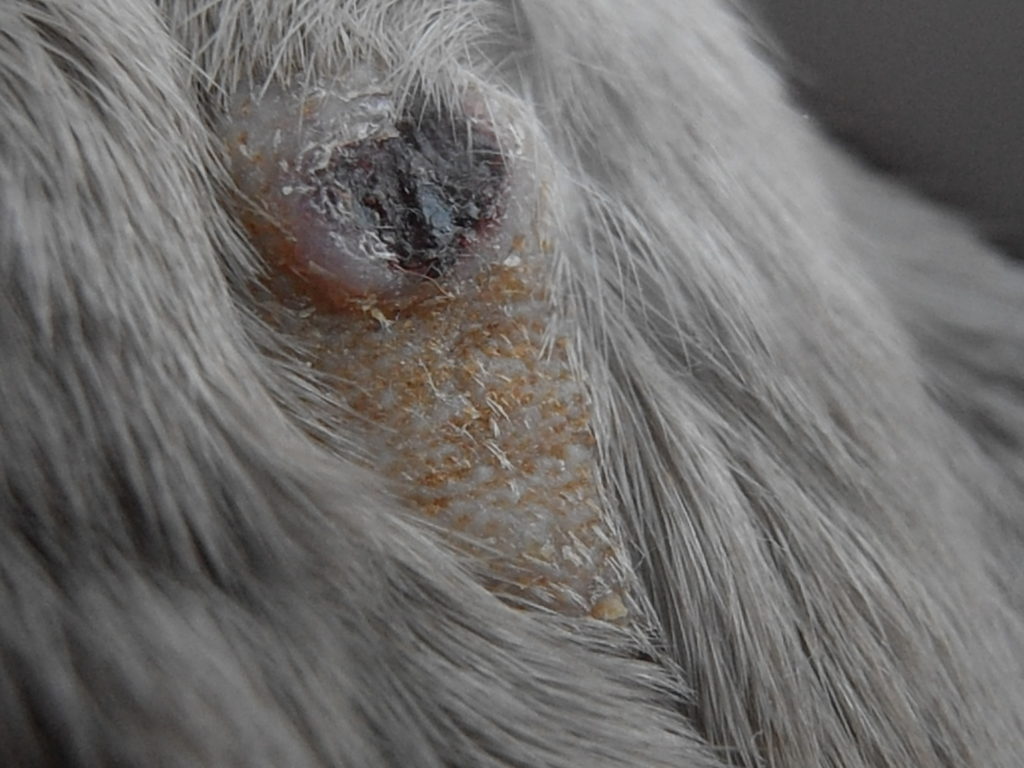
Syrian Hamsters are deemed adult at around 12 weeks of age too and can often live to 3 or older – with 2 being the most common. Most common illnesses in Syrian hamsters include but aren’t restricted to: Wet Tail (young Syrians) – a stress-related bacterial infection that is caused by a wide variety of things that induce biological stress including things like sudden dietary changes and dirty or overly-hot habitats – it needs urgent veterinary treatment for antibiotics; Internal Tumours – it is quite common in older gerbils to get some kind of internal tumour – these aren’t always diagnosed (due to the cost of autopsy) so it is difficult to say for sure what the most common ones are – but in all likelihood, even if spotted early, there would be no sure treatments.
As Syrian hamsters live on their own – their illnesses don’t affect their friends and family – but a sick gerbil can have some obvious effects on a gerbil clan. If the leader of a gerbil clan becomes really ill, it can cause one of the other gerbils to stand up and take their place – very normal in gerbil worlds – but this means they will sometimes chase or even attack the sick gerbil (gerbil language for “you are too weak – please leave now”).
Also, it is quite normal in the gerbil world to start to eat your dead friend – so don’t be offended by your gerbils doing this – or assume that they killed their tank mate in the first place and then did this.
Breeding & Babies:
This is another area where gerbils and Syrian hamsters differ considerably – and be very careful to get it right with Syrians otherwise there will be blood on your hands…
Syrian hamsters are solitary creatures – as we have already said – so don’t expect them to be all love and cuddles when it comes to mating – infact it couldn’t be less romantic.
A female hamster will come into heat on average every fourth day. Only on one of these days – in the evening – if a male is passing by at the right time – will anything happen. If she meets a male and isn’t in heat – they will fight.
If you get the timing right however, the female will adopt the mating position (called the ‘freeze’) when touched on her back and she will stand stock-still for at least half an hour like this while the male does his business. They will then part company and never meet again and the male will have nothing to do with his children.
After only 16 days, the litter are born (on average between 8-12 pups) and the female raises the young on her own quite happily. She won’t have another litter until they are all weaned and homed at around 4-6 weeks of age and she is in heat and meets another male…
NB: Syrian hamsters – as we know – live alone – and they start this pattern quite early in life. After just 6 weeks you may need to have ALL your Syrian hamster babies housed in separate cages – so you have better make sure you can home them all before you start breeding.
That is a lot of cages otherwise?
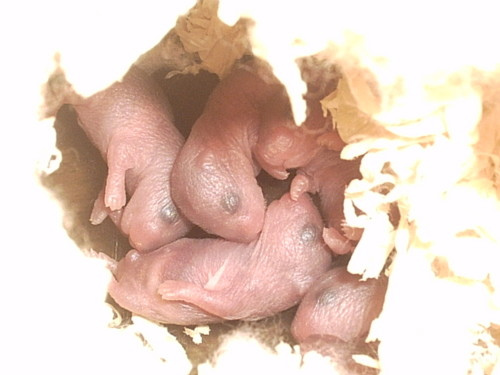

However, with gerbils we are looking at long term love and a working partnership – and pups who stay living with their parents.
A male and female gerbil can become friends even if she is not in heat (which usually happens every 4 or so days) and they will live together as besties this whole time.
At some point they will mate – which takes about 3-4 hours and involves a lot or running around, chasing and thrusting and then they just carry back on as normal – you don’t take the male out after mating as he will be helping to raise the first litter of pups (usually between 3-6 pups).
I say first, as gerbils are set up to have two litters in a row, they mate on the very same day they give birth to the first litter – often ignoring the newly-born pups for several hours after birth – all quite normal. So, if you find an accidental litter of pups in your tank – there is no point taking the male out immediately – the female is already pregnant anyway – so he can’t do any more damage – infact he can really help mom out.
So the male helps mom to raise the first litter (gerbils males make great dads) and after around 24 to 36 days – the female will have the second litter (usually around 4-7 pups – making an average of 7-10 pups in total).
Obviously, you need to take out the original male BEFORE this unless you want a third litter (which I can tell you now – the female gerbil doesn’t) and you can take him out with all of his sons from the first litter who are weaned by now (pups are fully weaned at around 4 weeks) and put them in a separate tank. One or more of the first litter daughters will help mum raise the second litter.
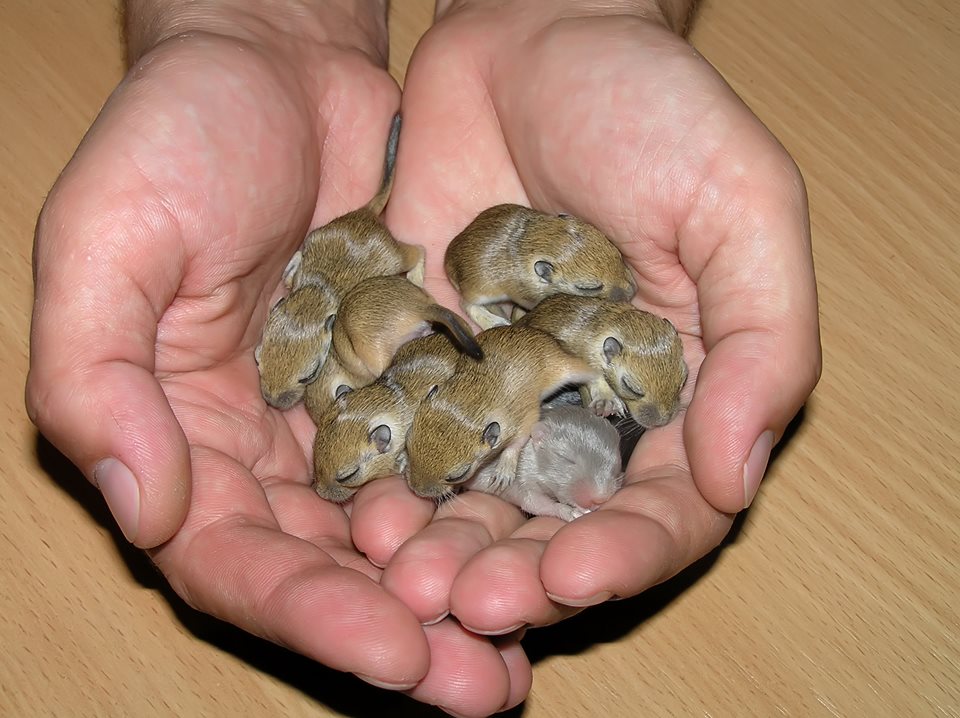
Extras & Exceptions:
Gerbils usually have a sand bath to keep them clean – as it helps with the oils in their coats. You can use child-friendly play sand – or you can use the same dust/sand as for chinchillas or corn flour for this and put it in a dish or jar. They will pee and poo in this as well as eat it [?] – all perfectly normal.
Hamsters can really enjoy a wheel – but gerbils are 50/50 with them. If you do get a wheel for your gerbils – don’t lower the level of bedding of the whole tank to fit it in (digging is more important) and please choose a solid thick plastic wheel (8″+) rather than those with bars or moving sections which could trap tiny feet and tails.
Neither gerbils and Syrian hamsters like to swim – and they really aren’t fans of getting wet at all – so please don’t force them to stand in cold water or put them in water deeper than 1cm.
Hopefully, this gives you enough of a heads up to make a decision?
If not take a look at one of my other Mongolian Gerbil Vs or Syrian Hamster Vs articles.
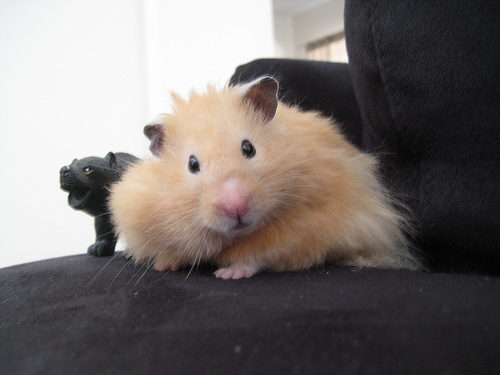

Photo by MarinaAvila 